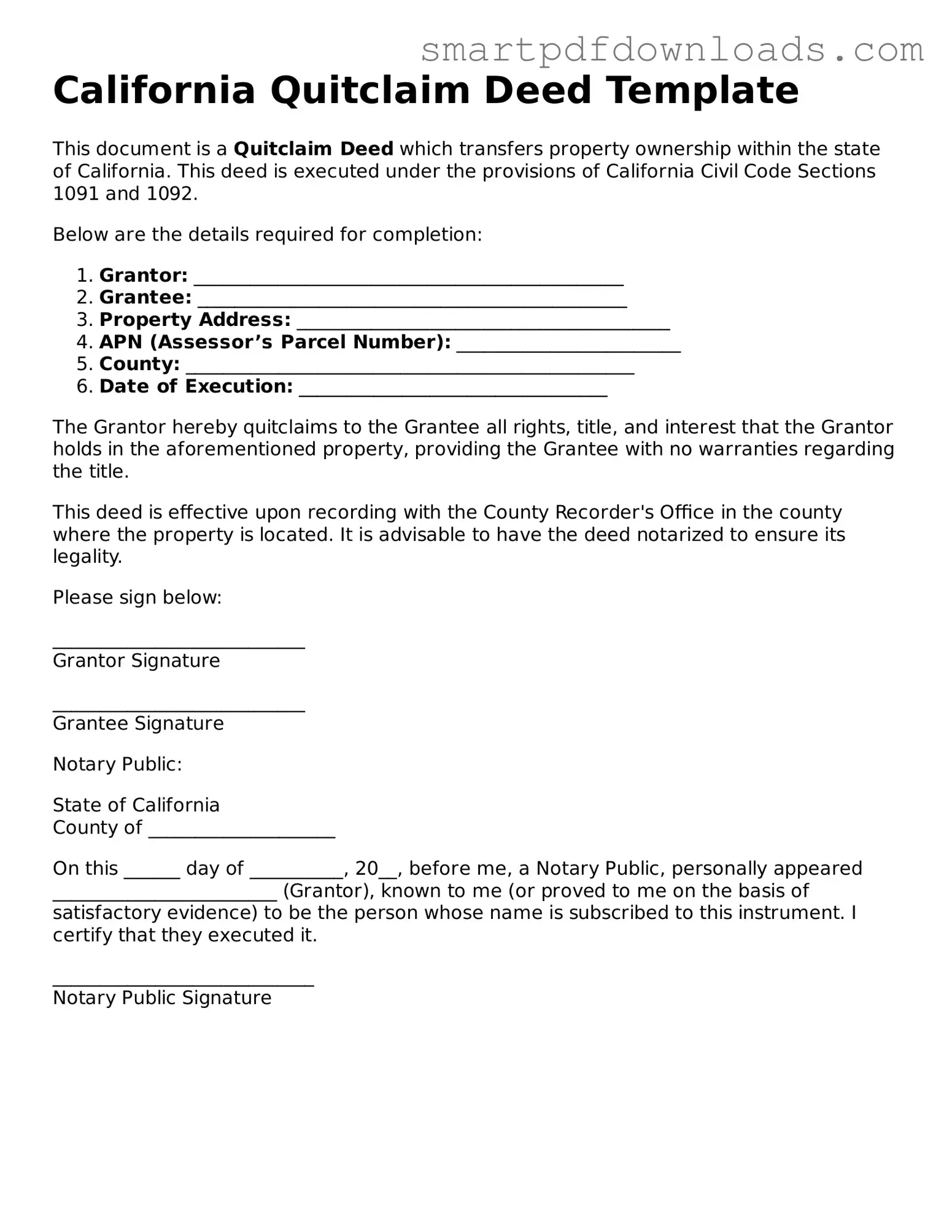California Quitclaim Deed Template
This document is a Quitclaim Deed which transfers property ownership within the state of California. This deed is executed under the provisions of California Civil Code Sections 1091 and 1092.
Below are the details required for completion:
- Grantor: ______________________________________________
- Grantee: ______________________________________________
- Property Address: ________________________________________
- APN (Assessor’s Parcel Number): ________________________
- County: ________________________________________________
- Date of Execution: _________________________________
The Grantor hereby quitclaims to the Grantee all rights, title, and interest that the Grantor holds in the aforementioned property, providing the Grantee with no warranties regarding the title.
This deed is effective upon recording with the County Recorder's Office in the county where the property is located. It is advisable to have the deed notarized to ensure its legality.
Please sign below:
___________________________
Grantor Signature
___________________________
Grantee Signature
Notary Public:
State of California
County of ____________________
On this ______ day of __________, 20__, before me, a Notary Public, personally appeared ________________________ (Grantor), known to me (or proved to me on the basis of satisfactory evidence) to be the person whose name is subscribed to this instrument. I certify that they executed it.
____________________________
Notary Public Signature
